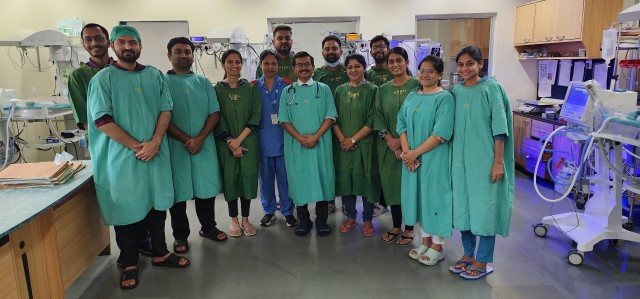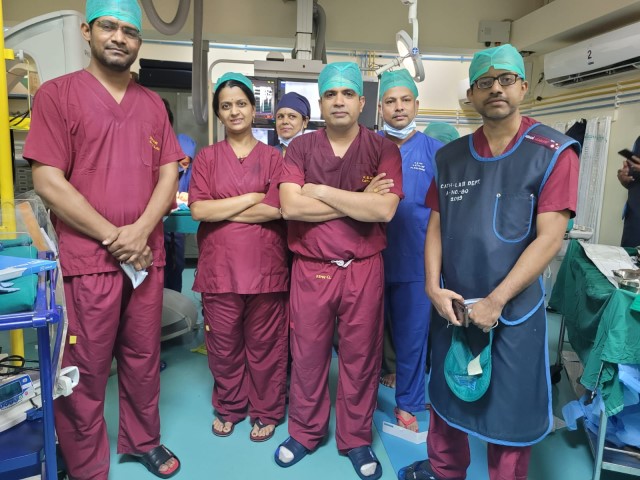The procedure was approved by the FDA in 2019 and is used to close the opening between two major blood vessels
PUNE: A team of doctors at KEM Hospital, Pune successfully conducted a Piccolo Device Closure procedure on a 23-week-old baby (male) with Patent ductus arteriosus (PDA) condition. The Piccolo Device Closure procedure and that too on a 23-week baby is the first in Pune. The multi-departmental treatment was led by Paediatric Cardiologist Dr. Pankaj Sugaonkar and Senior Neonatologist Dr.Tushar Parikh. Survival of a 23-week premature baby in itself is rare; reported from Pune only once previously in 2018 by the same team at KEM Hospital Pune, led by Dr.Tushar Parikh. The hour-long procedure performed in the cath lab and led by experts was assisted by a team of neonatologists, sisters, and cath lab technicians.
Explaining the case Dr. Tushar Parikh, Senior Neonatologist at KEM Hospital, Pune said that the premature baby was in critical condition when born. As a part of our NICU procedure for such babies, we conduct point-of-care functional eco-cardiography. This is done to find out the cardio-vascular adaptation of the babies. The baby was diagnosed with Patent ductus arteriosus (PDA).
PDA is a congenital heart defect where there is a persistent opening between two major blood vessels. An opening called the ductus arteriosus is part of a baby’s blood flow system in the womb. It usually closes shortly after birth. If it remains open, it’s called a patent ductus arteriosus. A large opening if untreated can result in many complications.

Dr. Parikh added that in such cases we give a standard dose of medicines. However, the opening between the two blood vessels could not be closed. This was causing excess blood load on the lungs and the baby was ventilator-dependent for about one and a half months. We were just not able to get the baby off-ventilator due to this heart condition. After counseling the parents, we decided to go for the Piccolo Device Closure procedure. The weight of the baby had also increased from about 586 gm when born to 1600 gm during this time.
Dr. Pankaj Sugaonkar, Consultant Paediatric Cardiologist at KEM Hospital, Pune said that in this case, since the medicines were unable to close the opening the only option was surgery. Before Piccolo Device, heart surgeries were the only option to close this opening where incisions are made from the back side between the ribs. But in this case, the condition of the baby was extremely critical and challenging. The baby was constantly on ventilatory support and not stable for surgery. The innovative Piccolo Device Procedure is a boon for such babies and was lifesaving in this case.
Dr Sugaonkar added that the procedure is performed in a cath lab. The device is in the form of three disc-shaped or dumbbell-shaped layers made of metal. It is loaded in a delivery system and inserted through a small 3mm incision at the inguinal region and guided through vessels to the heart to seal the opening. To help this happen catheter and a sheath in a crossed manner are guided through the vessel on which the device is placed and taken on the descending thoracic aorta after which the device is taken to seal the opening. ‘ In an extremely premature neonate it all becomes very challenging’ he added.
In six to nine months, a tissue layer grows over the device and becomes part of the heart. This is a one-time procedure and the device need not be changed, nor are any medications required. The procedure has many advantages. Lesser surgical marks, lower risk of infection, and faster recovery make this procedure more viable in such critical cases.
The baby is now 10 months old and doing fine added Dr. Parikh. We are happy to see the baby doing fine. His regular follow-up echo showed the device was in place and the baby’s gaining weight, added Dr. Sugaonkar


